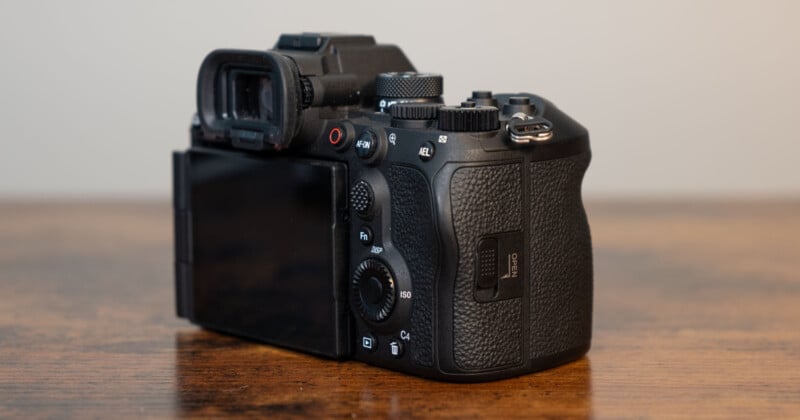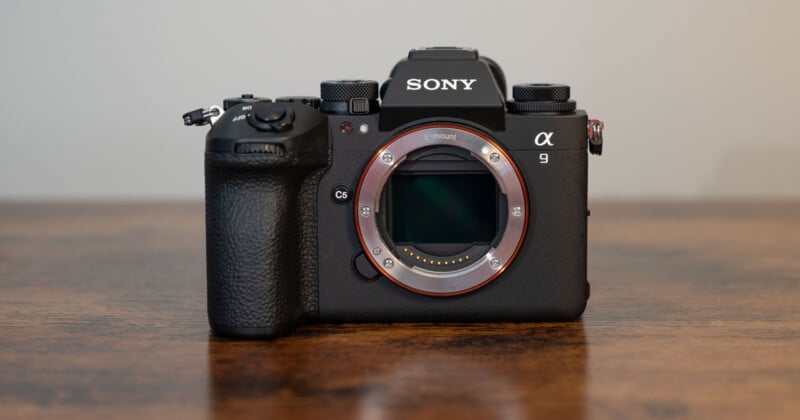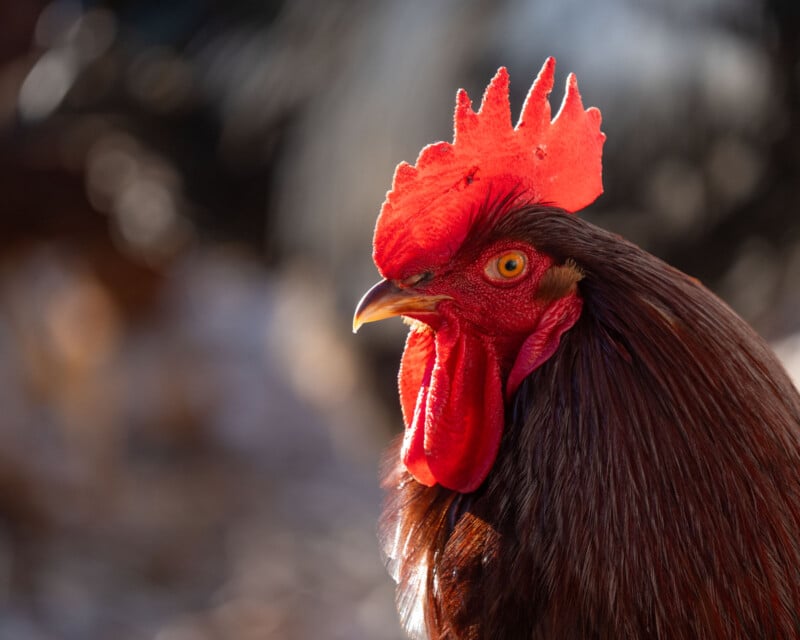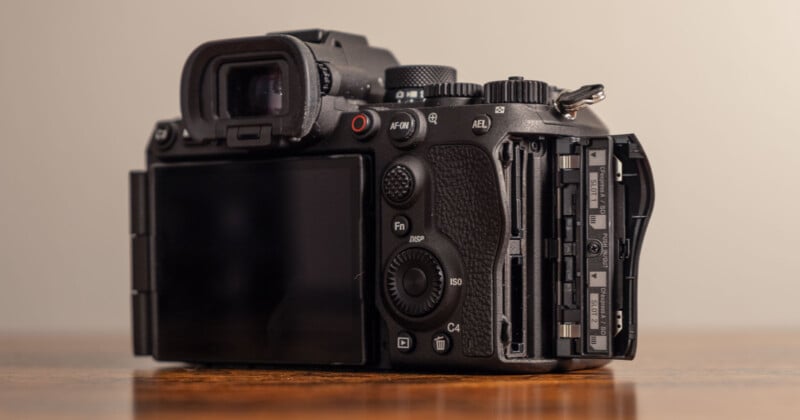Sony a9 III Review: A Costly Revolution in Camera Technology
No camera is as exciting or interesting as the Sony a9 III. Since Sony announced it in early November, the a9 III has occupied considerable space in my mind. Many questions have swirled since, and the answers to each have proved mercurial.
Editor’s note: For those of you who prefer video content, we recommend starting with PetaPixel’s hands-on first impressions of the a9 III before watching the video above as it will provide not only more information on build quality and design, but also serves to set up the questions that are answered in this review.
How does the $6,000 a9 III’s global shutter sensor affect image quality? Do people need this much speed? How do we evaluate a successor that is somehow both better and worse than its predecessor? What photos can people create with the a9 III that have been impossible before?
![]()
I’ve been reviewing cameras for about a decade; I’ve never grappled with so many questions or struggled to this degree to answer them. The Sony a9 III is in a class of its own in this way and many more, often for the better and, on rare but significant occasions, for the worse.
![]()
Sony a9 III Design and Handling: Continued Refinement Finally Hits the Mark
For Sony shooters, it is unsurprising that the a9 III, like many Sony cameras before, features what Sony promises are ergonomic refinements. These are frequently such minor tweaks that they barely warrant mention. However, in the a9 III’s case, Sony has made notable improvements.
![]()
One can be forgiven for not immediately noticing these changes. After all, Sony’s a1, a7, and a9 series cameras are near-identical siblings. However, the a9 III, as “samey” as it looks at first glance, is one of Sony’s most dramatic departures in design.
The redesigned grip has a deeper indent for your middle finger and offers noticeably more purchase for your hand overall. Alongside a steep forward angle to the shutter release, the camera is more comfortable than a camera like the a1. The relatively minor body shape changes deliver a significantly better shooting experience.

![]()
As far as other controls, there’s not much new, but Sony did add a fifth custom button to the front of the a9 III, which offers quick access to the camera’s “Speed Boost” function by default — more on that later.

The a9 III inherits the a1’s fantastic electronic viewfinder. The OLED panel has 9.44 million dots and 0.9x magnification, making it a significant step up from the a9 II’s 3.68M dot, 0.78x magnification EVF. The a9 III, thanks presumably to more processing power, delivers a 120fps EVF experience, whereas the a1 peaked at 60fps at full resolution. The a9 III can also hit 240fps at a lower resolution, but in my experience, max res and 120fps proved optimal. The a9 III has the best EVF of any Sony camera.
![]()
While I don’t often shoot using a camera’s rear display, the a9 III offers much to like here, too. With the a9 III, Sony has borrowed from the a7R V, giving photographers a fully articulating touchscreen. The panel has 2,000,000 dots, up from 1.44 million on the a1 and a9 II. The screen is the same size — 3.0 inches diagonally.
![]()
![]()
There is still room for improvement in the menus, which can feel bloated, but no Sony camera has ever been as enjoyable to use as the a9 III. Hopefully, some of these same improvements find their way into future Sony cameras.
Autofocus: AI-Powered Autofocus Excels
For good reasons, few terms these days raise a photographer’s hackles as much as “artificial intelligence.” However, before everyone circles the wagons, AI can be good when it comes to autofocus performance. Since the Sony a7R V, Sony has been including dedicated AI processor units in its cameras, and the a9 III is no exception.
![]()
The a9 III’s 793-point hybrid autofocus system uses AI to recognize various subjects quickly and accurately, from people and animals to birds and vehicles. And yes, I know that birds are animals, and so are people, but that doesn’t seem to be a bugbear for camera manufacturers who insist on birds being a separate category. Oh, and the a9 III has an Insect mode, so it can accurately focus on bugs and bears.
![]()
What’s that? Sony heard my inane moaning and added an “Animals and Birds” category to the a9 III? Good.

Although none of this sounds especially groundbreaking or new, no camera I’ve used has delivered a hit rate that matches the Sony a9 III. It isn’t perfect, but its misses are few and far between.
![]()
![]()
Performance: Incredible Speed and a Disappointing Buffer Depth
Regarding performance, the a9 III is a “good news, bad news” situation.
I might as well get the bad news out of the way. The a9 III’s buffer depth is not great. Sony continues to use CFexpress Type A cards, which offer the advantage of being compact enough to permit two dual CFe/SD card slots.

I understand Sony’s decision, but I don’t like it. CFexpress Type A is only half as performant as the larger CFexpress Type B format, and the cost of not using CFe Type B is compromising a 100% improvement in buffer depth. That compromise is acutely felt when shooting at 120 or even 60 frames per second.
![]()
The a9 III’s buffer is nearly 200 RAW frames, which sounds like a lot at first blush but is less than two seconds of continuous shooting at maximum speed. Even at half its top-spec, 60 fps, that’s a hair over three seconds of pedal-to-the-medal shooting. As we all know, the pedal will frequently meet metal if you’re buying an a9 III.
One of the appeals of 120fps shooting is the prospect of not missing a crucial moment. However, there’s no more surefire way to miss a moment than being hamstrung by a full buffer. While it clears, you can still shoot, but at a significantly slower speed.
![]()
This is all in the context of using a CFexpress Type A card. You can use an SD card, too, which allows for the same 120fps shooting rates, but the buffer will take significantly longer to clear (two to three times longer in my testing). Anyone buying the a9 III should strongly consider exclusively using CFexpress cards.
Of course, Sony has thought about all of this, and thus, “Speed Boost” returns to the discussion. Photographers can limit the camera to a lower speed, like 30 frames per second, and then override this limit by holding down the Speed Boost function button while depressing the shutter. This turbo button will send the a9 III into overdrive, but only when the situation dictates. It is a great feature, even if holding down a second button during shooting requires some adjustment.
![]()
I’ve alluded to the good news numerous times, but it bears repeating. The a9 III’s speed is unprecedented. It feels like only yesterday that photographers were celebrating a DSLR hitting the coveted 15 fps mark. Even 20 was a high watermark for a while in the mirrorless age. Then 30. And now, we’ve reached 120. It’s remarkably fast.
Yes, this speed comes at a cost to buffer depth, but the days of spraying and praying are gone. Now, photographers can press the shutter and know that what they want to capture will almost assuredly be in their burst. When you absolutely must have the shot, the a9 III gives you the best chance to capture it, and that ability can be precious.
![]()
However, you can still miss the shot if you don’t press the shutter in time. Sony, like other camera makers, has thought of that, too. Pre-capture allows photographers to constantly buffer a selected amount of time with the shutter half-pressed. When the shutter is fully pressed, the camera saves a prior period’s worth of photos along with whatever fits in the buffer after you start actively shooting images.
Pre-capture reduces the amount of buffer you get after pressing the shutter, as the camera must process images it “shot” while the shutter was half-pressed. It can still be helpful in some situations, but there isn’t a considerable buffer to burn as it is.
![]()
When you need speed, the a9 III has it in spades. When you need speed and buffer depth, there’s a slight problem. A roughly 15-second buffer clearing with a CFexpress Type A card may not sound like a long time, but it feels like an eternity when watching action pass you by.
All that said, it’s easy to imagine the shots the a9 III will enable. The a9 III will feel like cheating between outstanding autofocus performance and breakneck continuous shooting speeds for sports photographers.
![]()
The Global Shutter-Sized Elephant in the Room
It’s finally time to talk about the a9 III’s “big” feature: its global shutter. The 120 fps shooting results from the global shutter, as do numerous other key features.
I’ve written about the importance of the global shutter already. Multiple times, actually. In those articles, I go into detail about how a global shutter sensor works, its benefits, its costs, and how the pros and cons tip the scales for different types of photography.
![]()
At a basic level, the global shutter matters because it changes the fundamental way in which pixels on the image sensor are exposed and, thus, how an image is created.
For cameras with a focal plane shutter, which for our purposes is every other camera, images are exposed a row of pixels at a time. This scanning process occurs rapidly, but no matter how swiftly a sensor scans, there can be movement fast enough to be distorted in certain situations. This is a rolling shutter artifact.

Common examples of a rolling shutter artifact include a misshapen ball or a distorted racket/club/stick/bat during a sporting event. Rolling shutters can also distort fast-moving cars and propellers and even wreak havoc with some light sources, especially LEDs.
![]()
Thanks to its global shutter, the a9 III will never have a rolling shutter problem because its shutter doesn’t roll. Instead of scanning, it simultaneously exposes every photodiode (pixel) across the entire image sensor.
This also means the a9 III can sync with flash at any shutter speed, assuming the flash is up to the task like Sony’s own high-end flashes, which were recently updated. Chris Niccolls explains everything you need to know about flash sync and flash duration in the video at the top of this review.

And “any shutter speed” does mean any, including the a9 III’s maximum shutter speed of 1/80,000s. While the camera is currently capped at 1/16,000s when shooting continuously — a firmware update is supposedly in the works to change this — in single-shot drive mode, the a9 III offers the fastest shutter speed of any Sony Alpha camera.
The Image Quality Cost of the Global Shutter
The global shutter sensor design includes drawbacks in terms of image quality. While the global shutter enables so many incredible and worthwhile features, it reduces the camera’s maximum dynamic range and native ISO range, which are intimately related issues and introduces relatively excessive noise.
![]()
The Sony a9 III’s sensor has lower-capacity photodiodes than other similar resolution contemporary focal plane image sensors because the circuitry required for the global shutter occupies physical space.
As a result, the a9 III’s photodiodes — where photons go in an image sensor before being converted into the electrical signals that become digital images — are smaller, which means they accept relatively less light. The decreased light capacity means the a9 III’s base ISO must be higher. In its case, the base ISO is 250, up from 100 on the a9 II.
![]()
This impacts shutter speed selection in bright light, especially with fast lenses. This downside is partly offset by optional “extended” low ISO settings and the ability to shoot at super-fast shutter speeds, even with flash.
On the other hand, the effect on dynamic range is impossible to offset. All else equal, an image sensor delivers its maximum dynamic range at base ISO, and the lower the base ISO, the higher the maximum dynamic range. Among other reasons, this is why the Sony a7R V, which has a native base ISO of 100, delivers the highest possible dynamic range of all Sony cameras.
![]()
![]()
Sony has pushed back on this point, arguing that the a9 III’s dynamic range at base ISO (250) is comparable to the a9 II at ISO 250.
I’m happy to accept that, but my contention is not whether the a9 III is as good as the a9 II at ISO 250, but rather if the a9 III’s DR is as good as the a9 II at their respective “best.”
That answer is no.
Compared to many other cameras I’ve shot, ranging from Micro Four Thirds to medium-format, the flexibility of the a9 III’s RAW files during post-processing is more like an APS-C or older full-frame camera rather than the current high-end full-frame mirrorless cameras. RAW files shot at base ISO are merely okay. They get the job done but do nothing to move the needle.
![]()
![]()
![]()
The same goes for noise levels at various ISO settings. The a9 III is noisier than its contemporaries across the board. But again, the story is not one of failure and despair but of sufficiency in the context of the expected use case. For sports photographers, capturing the moment takes precedence.
Where the Sony a9 III Excels and Where it Falls Short
The mentality of a sports photographer is not transferable to those who shoot landscape photography, where resolution and dynamic range reign supreme. The a9 III is not a landscape camera, although I’m a landscape photographer, so I shot landscapes with it.
![]()
![]()
![]()
![]()
The a9 III is not quite an optimal portrait camera, either, even though its siren song of unlimited flash sync will draw many portrait photographers to its rocky shores. Chris Niccolls and Jordan Drake, PetaPixel’s YouTube team and makers of the video at the top of this review, shot plenty of portraits with the a9 III. In both cases, the performance of the a9 III can be described as okay but not phenomenal.

So, what kind of camera is the a9 III? It’s the best sports and action camera available today. There are plenty of good cameras for sports photography, including others made by Sony, but the a9 III wins the gold medal.
Between the best-in-class autofocus, best-ever shooting speed, and complete eradication of rolling shutter, the a9 III has a lot going for it for sports and action.
![]()
![]()
![]()
![]()
Do I wish the a9 III’s buffer depth was larger? Yes, and maybe the a9 III will be able to address this bottleneck to some degree at some point. Sony has been evasive about precisely what CFexpress hardware is in the camera, but if it happens to support the latest CFexpress 4.0 standard one day, that would be huge.
I’d also prefer a wider native ISO range — being capped natively at ISO 25,600 feels a bit old-fashioned — and better overall image quality. Even so, feelings of disappointment fade away at the moment when the a9 III stays glued to the subject and captures 200 frames in less than two seconds.
![]()
![]()
![]()
However, when not steeped in the hustle and bustle of action photography, the a9 III’s shortcomings are felt more acutely. When shooting landscapes, I miss the dynamic range of the a7R V. When photographing wildlife, a genre that benefits significantly from some of the a9 III’s features, I yearn for better high ISO performance and more resolution.
![]()
![]()
The obvious rebuttal is, “Well, then, pick the right tool for the job.” Of course, that’s sage advice, and the a9 III is not a jack-of-all-trades type of camera. What it offers in terms of autofocus and speed, it lacks in overall photographic versatility.
![]()
![]()
Sony a9 III: A Sleeper for Cinema
Despite some image quality drawbacks that apply to video as much as stills, the a9 III’s ability to avoid rolling shutter and deal with flickering lights makes it a compelling choice for video. Add in 16-bit RAW output over full-size HDMI, 4K recording at up to 120p, and 10-bit 4:2:2 internal recording, and there’s a lot to like. I’ll leave it to the expert to go into more detail, as Jordan Drake explains everything you need to know in our video review.
Revolutions Are Expensive
In meaningful ways, the Sony a9 III is a revolutionary camera. It makes possible shots that were once impossible.
While the a9 III pushes photography and camera technology into uncharted waters, it is not all smooth sailing. Image quality has taken a demonstrable step bac, and as incredible as the camera’s speed, Sony’s choice of memory card tech is less forward-thinking than its image sensor.
The Sony a9 III is the first of its kind. It makes lofty promises of groundbreaking this and unprecedented that. Sony delivers on some of these promises and sets the stage for a future where there may be no compromises.
![]()
![]()
![]()
We aren’t there yet and may not be for many years. But in the meantime, the Sony a9 III empowers photographers in ways no camera ever has.
Are There Alternatives?
No other camera can do everything the a9 III does. The $5,000 Canon EOS R3 offers a similar resolution but lacks a global shutter and isn’t as fast. The Sony a9 II is still a great camera but not as adept as its successor regarding autofocus performance or shooting speed.
The $5,500 Nikon Z9 and $6,500 Sony a1 are slightly different beasts, as they sport 45.7 and 50-megapixel sensors, respectively. However, they are also fast cameras that have proven remarkably capable of sports and wildlife photography. They’re also much better than the a9 III in terms of overall image quality.
![]()
![]()
Should You Buy It?
Maybe. If you cannot afford to miss the moment, then you should buy Sony a9 III. It is worth every penny of its steep $6,000 asking price for some. For those who frequently shoot in situations where the focal plane shutter rears its ugly head, either with unsightly flickering or unnatural rolling shutter artifacts, the a9 III solves problems that trip up all other cameras.
![]()
![]()
As for everyone else, especially those who find 20 or 30 frames per second sufficiently quick or photographers who value dynamic range, high ISO performance, and resolution, look elsewhere.
The Sony a9 III is a game-changer, but it’s not a game every photographer plays.
Image credits: Unless otherwise noted, all photos by Jeremy Gray for PetaPixel